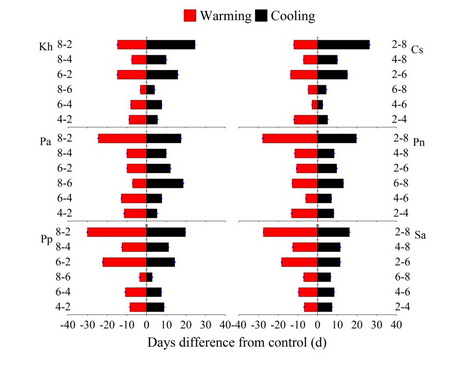| News |
| Latest news | |
| Int’l Cooperation activities | |
| Events & Announcement | |
| Recent Activities |
| Location: Home>News>Recent Activities |
| A step forward in understanding responses of flowering phenology to climate change |
How will flowering phenology respond to future climate change? That is a question haunting many scientists due to its immediate link to biodiversity and carbon cycle. “Understanding how flowering phenology responds to warming and cooling (i.e. symmetric or asymmetric response) is a must before accurately addressing this question. “ said Prof. WANG Shiping, scientist in laboratory of Alpine Ecology and Biodiversity of ITPCAS. To understand this scientific question, Prof. Wang led his group to conduct a 3-year reciprocal translocation experiment along an elevation gradient from 3200 to 3800 m in the Tibetan plateau for 6 alpine plants. Their experiment, combined with modeling, found that a transplanting to lower elevation (warming) advanced the first flowering date (FFD) and transplanting to higher elevation (cooling) had the opposite effect. “The FFD of early-spring flowering plants (ESF) was four times less sensitive to warming than to cooling, while mid-summer flowering plants (MSF) were about twice as sensitive to warming than to cooling.” Remarked Prof. Wang and his colleagues based on their research, “Compared with pooled warming and cooling data, warming alone significantly under-predicted 3.1 days ℃-1 for ESF and overestimated 1.7 days ℃-1 for MSF.” They thereupon suggest on “considering non-linear temperature responses than can cause such warming-cooling asymmetries as well as differing life strategies (ESF versus MSF) among plant species in future empirical and experimental studies.” Entitled “Asymmetric sensitivity of first flowering date to warming and cooling in alpine plants”, this study has recently been published by Ecology (http://www.esajournals.org/doi/abs/10.1890/13-2235.1).
|


